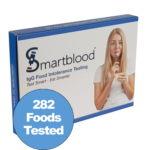When you know a certain ingredient causes you problems, avoiding it eventually becomes second nature. But being able to do that depends on knowing what it’s called. Seems obvious, right? Well, not always.
When it comes to food labelling, things aren’t always as they appear. Depending on their use, or the way they’re processed, certain ingredients are often listed by alternative names, making it tricker to spot your trigger foods.
Let’s take a look at some of the sneaky sources of food sensitivity.
Egg
Often used as a binding agent, eggs are a common ingredient in a wide range of products and processed foods. But often you won’t find them listed as ‘egg’. If you’re trying to avoid them, scan your food packing for their alternative names, including:
- Apovitellin (found in egg yolk)
- Dried egg solids.
- Livetin (found in egg yolk)
- Lysozyme (found in egg white)
- Ovalbumin (found in egg white)
Cows’ milk
Dairy is a common source of problems for many people. But while it’s easy enough to avoid milk, cheese and butter, cows’ milk does pop up in some unexpected places (crisps, anyone?), so it’s worth keeping an eye out for the sneaky pseudonyms, if you’re trying to stay dairy-free. Keep an eye out for:
- Casein
- Caseinate
- Lactalbumin
- Lactoglobulin
- Lactose
Yeast
Yeast is a tricky trigger food. Many people experience problems after consuming yeast, but it’s one of the lesser-known problem ingredients. Yeast is found in a wide variety of foods, from baked goods to fruits to alcohol. It can also be found in some dairy products. If you’re steering clear of yeast, as well as ‘bakers’ and ‘brewers’ varieties, look out for:
- Hydrolysed Protein
- Hydrolysed Vegetable Protein
- Leavening
Gluten
Gluten, a trigger for many people, is a family of proteins found in certain grains, most commonly wheat.
The two main proteins in gluten are glutenin and gliadin. Gliadin is responsible for most of the adverse health effects of gluten. Although it’s common to hear people refer to gluten as a problem ingredient, you often won’t see gluten listed on food packaging. Instead, it’s more likely you’ll find on these alternative names:
- Natural Flavour
- Monosodium Glutamate
- Emulsifiers
- Lecithins
- Caramel Colour
- Hydrolysed Vegetable Protein, Hydrolysed Plant Protein and Textured Vegetable Protein
- Malto-Dextrose
Wheat
Wheat is one of the most prevalent sources of gluten and also one of the most confusing to avoid. There is a long list of alternative names for wheat you can find on food packaging, including:
- Binder or binding
- Bulgur
- Cereal
- Cereal binders or cereal protein
- Couscous
- Duram (durum)
- Einkorn
- Farina
- Filler
- Flour
- Frumento
- Graham
- Gum base
- Hydrolyzed wheat protein
- Kamut
- Malt
- Manna
- Matzo
- Matzah
- Matzoh
- Modified starch
- Rusk
- Seitan
- Semolina
- Special edible starch
- Spelt
- Starch
- Thickener or thickening
- Triticale (a hybrid of wheat and rye)
When it comes to food intolerances, knowledge is power. Avoiding your trigger foods isn’t always easy but being aware of some of their other names can help you make the right choices for you when choosing foods.
Do you know what you’re avoiding?
You may feel certain that a particular ingredient causes you problems, but are you sure? On average, we react to between 4 and 6 foods. Additionally, reactions can take up to 72 hours to appear, which makes it very tricky to identify exactly what is causing the issue. You might think it was the eggs you had at breakfast, but it could have been the tomatoes in the sandwich you had for lunch the day before.
Knowing exactly what your own triggers are gives you greater knowledge and control over your diet and wellbeing, empowering you to make the right choices for you and giving you confidence, even when you’re out of your culinary comfort zone.
What are the signs of a food intolerance?
Food intolerances, which can occur when your body’s immune system mistakes a food protein as a threat, releasing antibodies to fight it, can cause a host of inflammation.
Headaches, brain fog, IBS, bloating, low mood, and joint pain are all reactions that can result from a food intolerance, as well as skin complaints like eczema or acne.
Take control of your diet
Getting to the bottom of a food intolerance can be frustrating. A common recommendation is the elimination diet, where you remove one food at a time for a few weeks to see how you feel. But this process can take a long time. And, although many of us commonly react to a few different ingredients, the elimination diet is often abandoned when the first trigger food is found, leaving an incomplete picture of what’s causing the problem.
Get answers faster with Smartblood
When it comes to food intolerance testing, it’s important to do your research and choose a reputable laboratory testing company. At Smartblood, we offer a comprehensive test to help you take control of your diet quickly and discover your own trigger foods.
Our home-to-laboratory service gives you fast, accurate results that pinpoint exactly which foods you are reacting to. Tests are completed in our accredited laboratory by trained experts, with clear, easy to understand results sent to you via email within three days.
Dedicated nutritional support
Our tests include a telephone consultation with our BANT registered Nutritional Therapist. This additional support is there to help you understand your results and put a plan together to make safe, sustainable changes to optimise your diet.




